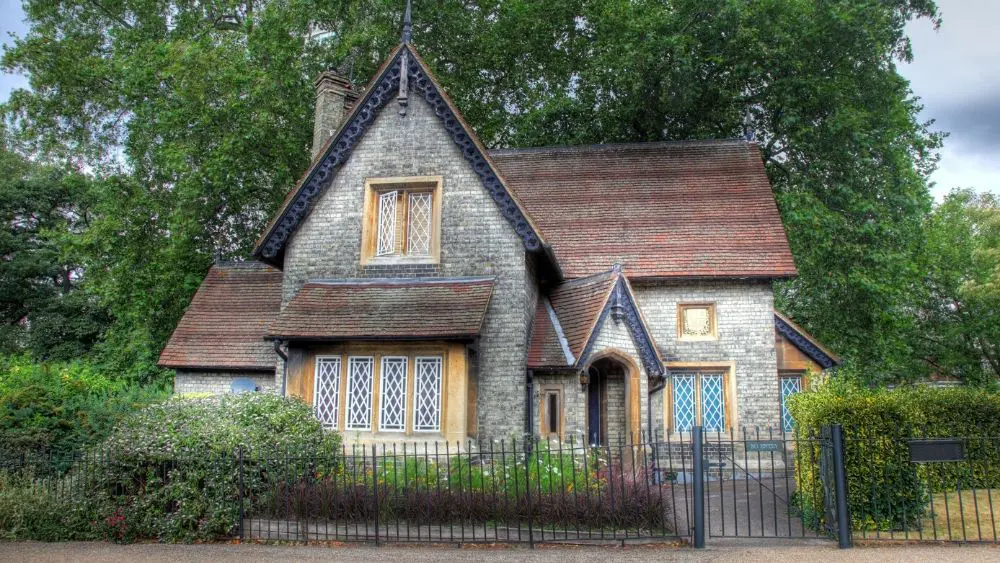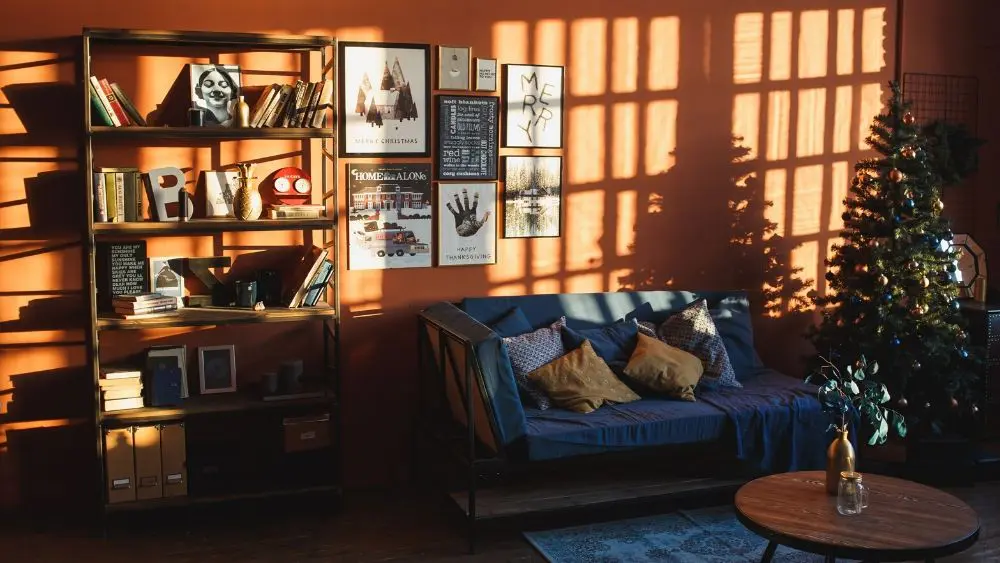Of all the different home styles out there, cottages are perhaps the most cozy and charming. These quaint abodes are built around the idea of being a quiet retreat from everyday life. Whether you want to design a cottage of your own, or are just eager to bring some cottage vibes to your home, here’s everything you need to know.
What Makes a House a Cottage?
Although the official parameters of what defines a cottage are somewhat contested, one hard and fast rule is that cottages are small, freestanding homes. You’ll often hear “cottage” tacked onto the end of other home style descriptions; for instance, the Tudor cottage shown below.

Aside from being small, what else makes a cottage? Well, there are a few important factors; to help, here’s a photo of a typical cottage for reference.

Intentional Landscaping
This feature has nothing to do with the physical house, but rather the grounds surrounding it. Cottages are often on a large plot of land that allows space for a meticulously-tended front and rear grassy area. Bright flower beds, climbing plants that creep up the walls, hedges, a stone path leading to the front entryway – all these elements and more come together to create a cottage-like ambiance that begins as soon as you step foot on the property.
A waist-high fence encircling the space is common, but not a requirement.
Unique Layout
Looking at a cottage head-on, you’ll quickly notice the unique layout. In the photo above, you can see the rectangular base of the home, behind the main gable. But then, there’s the archway that juts out diagonally from where the gable and rectangle meet, the lower rectangular structure on the left, and the slanted roof peeking out on the right.
When it comes to cottages, function is first. Meant to be a place to rest your head but not spend an entire day in, you’ll often find rooms that seem to serve no particular purpose aside from providing a breathtaking view of nature.
Steeply Pitched or Gabled Roofs
Inspired by homes in northern England, many cottage roofs are steep to prevent the buildup of rain or snow, which could damage to the structure. While this could make the home appear to loom high, cottage roofs are often accented with detailed trim painted in a complementing color. As a result, the gabled roofs add to the picturesque storybook look of these homes.
What is Cottage Interior Design?

Cottage home interiors are carefully crafted to continue the inviting warmth that the exteriors give off. Exposed brick and wood are a common sight, encouraging visitors to shed any sense of formal stiffness in favor of authenticity. Because these spaces are small, cabinets are often nixed in favor of open shelving, which further add to the quirky, eclectic feel of cottages.
Patterns have been a common decorative element in cottages since their origin. You can incorporate this with floral prints on upholstery, or perhaps a geometric accent wall painted in dramatic colors.
When it comes to furniture, matchy-matchy sets have no place in these unique homes. Fill a cottage home with mismatched chairs, furniture bought from antique or thrift stores, and inherited family pieces to drive the vintage look home. (As a bonus, you’ll be saving money.) To avoid visual chaos, select a common color from a light palette to unify the space: Wicker chairs painted a soft blue that’s also used for interior trim will go a long way.
Finally, keep in mind that because these homes are small, it’s easy for them to feel cluttered. Maintain order with creative storage options and by minimizing your material possessions. Keep windows free of heavy drapes so that natural light and air can easily permeate the home. After all, cottages are all about welcoming nature indoors.
The enchanting aesthetic of cottages is well within reach for homeowners. Keep the goal of being light and airy in your mind, and with some simple intentional choices, you’ll have a personal storybook escape.
For more design inspiration, follow NewHomeSource on Instagram!

Kian Zozobrado joined Builders Digital Experience (BDX) in 2019 as a content writer. A graduate of Southwestern University with a degree in English, Kian is passionate about the written word and making connections. Outside of work, Kian also serves as president of the Board of Directors for the Writers’ League of Texas.
 First-Time Homebuyer Programs in New Jersey
First-Time Homebuyer Programs in New Jersey